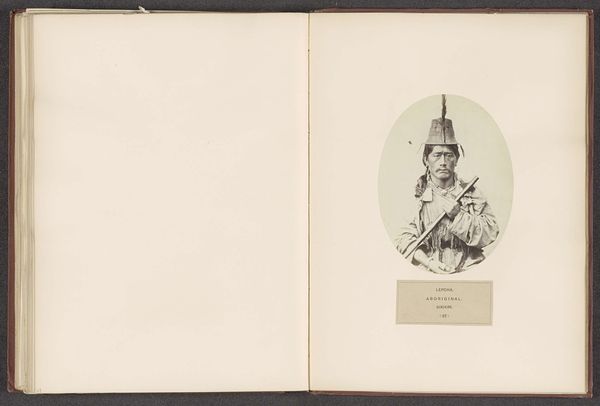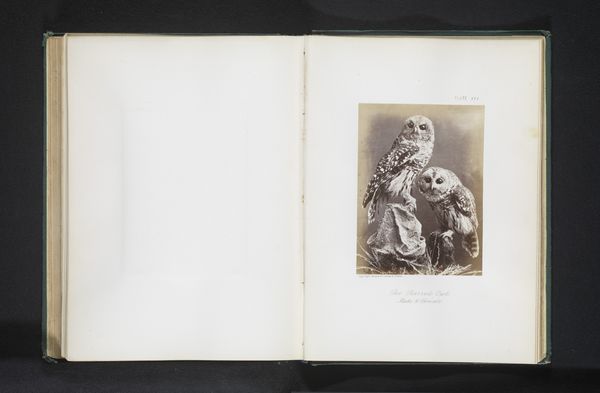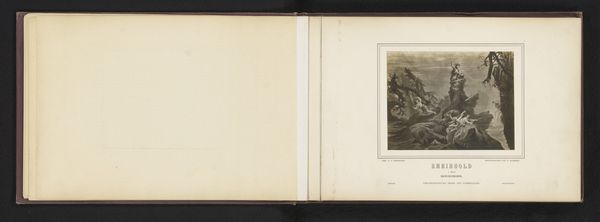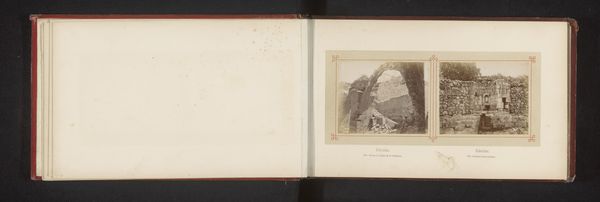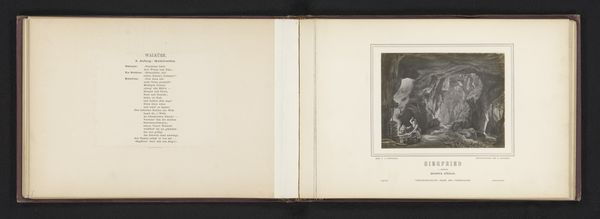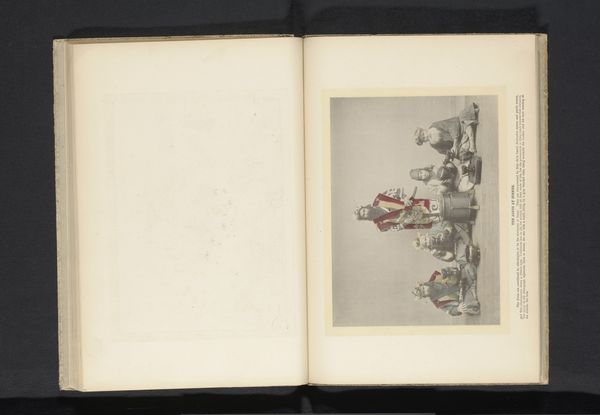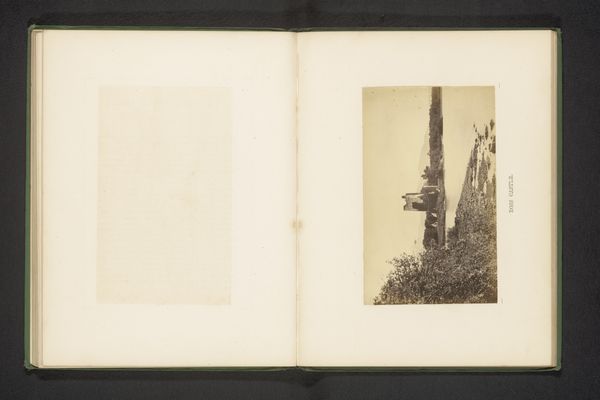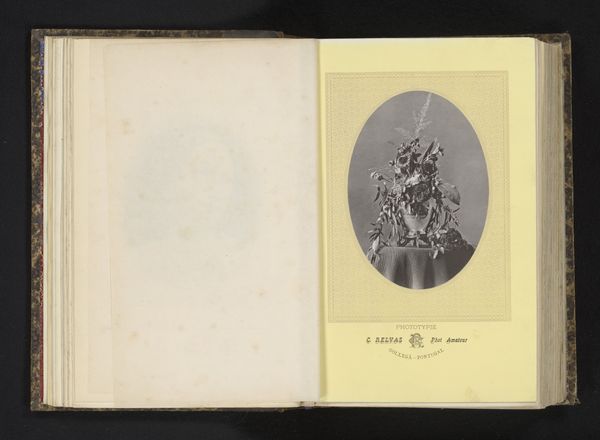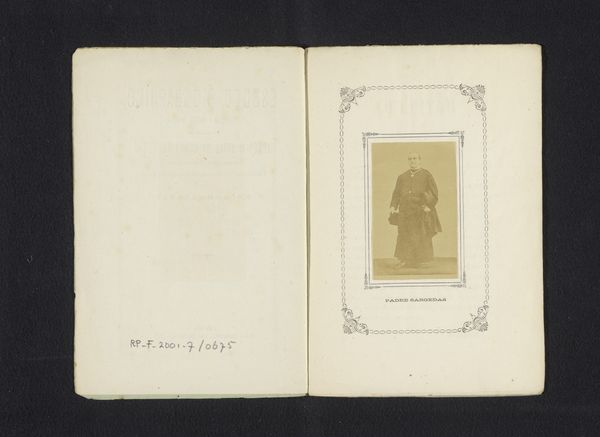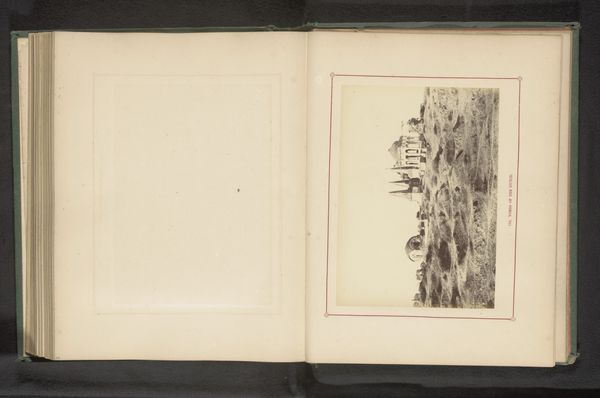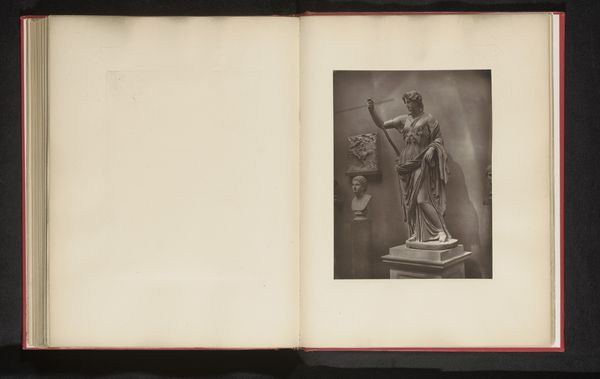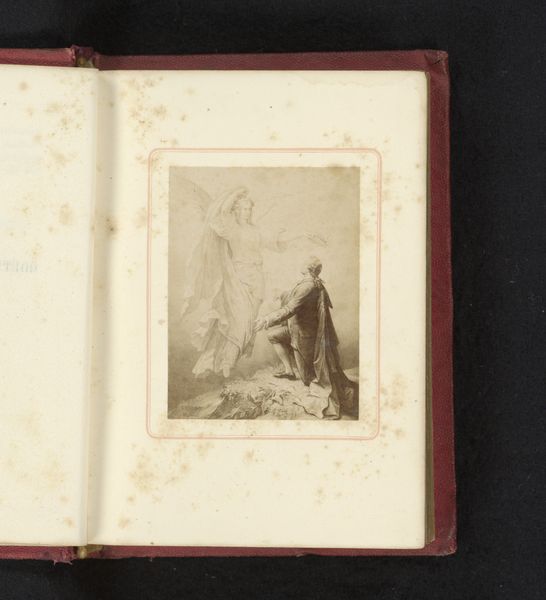
albumen-print, photography
#
albumen-print
#
portrait
#
photography
Dimensions: height 230 mm, width 166 mm
Copyright: Rijks Museum: Open Domain
Curator: So, what strikes you first about this image of the unknown woman? It’s labeled "Portret van een onbekende vrouw met een waaier"—Portrait of an Unknown Woman with a Fan. It comes from before 1900, rendered through print and photography techniques on paper. Editor: The austerity! It feels muted, almost like a ghost trapped in sepia tones, yearning for color. And the costume—so rigid and formal. What's the story there? Is it ritualistic, theatrical, what's going on? Curator: It touches on Japonisme, reflecting that Western fascination with Japanese aesthetics and culture that swept through art during that period. Looking deeper, we see a construction of the 'Orient' through a Western lens—often exoticizing and flattening diverse cultures into a single, marketable aesthetic. The print raises many questions regarding cultural appropriation and representation. Editor: Appropriation, definitely. I sense a disconnect, something studied rather than felt. The woman looks so self-contained, almost detached, but trapped within this presentation. I want to reach into the photo and ask her if this costume truly fits. The rigid collar, the geometric hat, and fan…It feels symbolic and perhaps uncomfortable. Curator: That perceived discomfort becomes quite pertinent when considering the performance of identity. This photograph captures a particular historical moment when cultural exchange wasn't equitable. This exchange played out through power dynamics steeped in colonialism, where the 'Other' became commodified and consumed. How does the idea of gender fit here, do you think? Editor: Intriguing! The woman exudes androgyny—the clothing obscures a lot of femininity as traditionally constructed by western audiences, almost a deliberate move. And it begs so many questions; I want to reimagine her—liberated from the frame. Curator: I completely agree! We could further understand the dynamics of such presentation through critical intersectional dialogues. Editor: Absolutely! And maybe we have to learn to see beyond the immediate picture and engage a critical reflection in historical, social, and political perspectives.
Comments
No comments
Be the first to comment and join the conversation on the ultimate creative platform.
